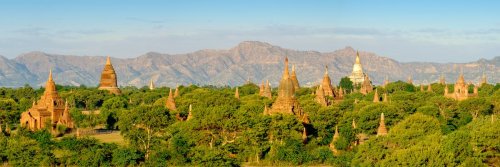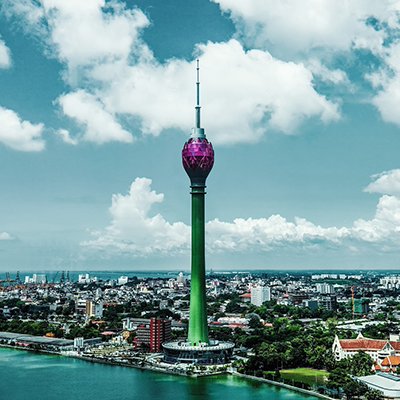5 World Heritage Sites That Are A Must See And Crowd Free
Everyone has heard of the Great Barrier Reef, Machu Picchu and Petra, and every year tens of thousands of people flock to these popular destinations. Why not try something a little bit different and plan a visit to one of the following lesser known world heritage sites, that are every bit as stunning and much less crowded.
Bikini Atoll Nuclear Test Site, Marshall Islands

A nuclear weapons test site may not be the first place that you consider for a holiday destination, but diving trips to this unique site are becoming more popular with both tourists seeking a secluded paradise and adventure seekers wishing to discover the site of the 23 nuclear tests. The history of these islands is apparent as soon as you arrive, with a fly over displaying the gigantic craters where the weapons left their impact on the islands. The waters surrounding the Bikini islands have been named as one of the best diving sites in the world, with crystal clear warm waters and an abundance of shipwrecks to explore. Despite higher than average radiation levels, it is safe to explore the islands, although eating food grown there is not advised.
Like the idea of an Island holiday? Check our these Islands Perfect for Valentines Day.
Volcanoes of Kamchatka, Russia
 If you thrive off danger, or simply admire spectacular scenery, the Volcanoes of Kamchatka are a must-visit destination. Out of an impressive number of 160 volcanoes, 29 are known to still be active, making it a thrilling place to hike. A volcano trekking holiday through the region will expose visitors to otherworldly landscapes and the chance to spot a variety of rare wildlife, including bears and eagles. Although difficult to reach (the area is only accessible by helicopter), the Geyser Valley is an essential part of any visit to the area. Known as the second largest concentration of geysers and hot springs in the world, the area was partially destroyed in a mudslide several years ago, but remains a must-see destination.
If you thrive off danger, or simply admire spectacular scenery, the Volcanoes of Kamchatka are a must-visit destination. Out of an impressive number of 160 volcanoes, 29 are known to still be active, making it a thrilling place to hike. A volcano trekking holiday through the region will expose visitors to otherworldly landscapes and the chance to spot a variety of rare wildlife, including bears and eagles. Although difficult to reach (the area is only accessible by helicopter), the Geyser Valley is an essential part of any visit to the area. Known as the second largest concentration of geysers and hot springs in the world, the area was partially destroyed in a mudslide several years ago, but remains a must-see destination.
Butrint, Albania
 For those interested in archaeology, skip the crowded Acropolis and head to Albania to discover the little known ruins of Butrint. There is a wealth of history to discover here, as the site was first inhabited in prehistoric times, before becoming the home of both the Greek Chaonian tribe and a Roman colony. Abandoned in the middle ages after a flood resulting from an earthquake engulfed the ancient city, it was left to ruins. The most famous archaeological site in the country, Butrint is a haven for enthusiasts, as many of the important monuments are still intact. It is possible to walk around the ruins and visit the city walls, basilica, amphitheatre and a number of castles.
For those interested in archaeology, skip the crowded Acropolis and head to Albania to discover the little known ruins of Butrint. There is a wealth of history to discover here, as the site was first inhabited in prehistoric times, before becoming the home of both the Greek Chaonian tribe and a Roman colony. Abandoned in the middle ages after a flood resulting from an earthquake engulfed the ancient city, it was left to ruins. The most famous archaeological site in the country, Butrint is a haven for enthusiasts, as many of the important monuments are still intact. It is possible to walk around the ruins and visit the city walls, basilica, amphitheatre and a number of castles.
Viñales Valley, Cuba

You may associate a trip to Cuba with visiting the city of Havana, but every traveller to the Caribbean island should ensure that they have time to visit Viñales Valley to the west of the island. This protected area is surrounded by unusual tall and rounded mountains and large fragments of rock jut out among the agricultural fields. A large amount of tobacco is still grown here, by the multi-ethnic community of farmers that call the valley their home, using ancient methods rather than modern farming techniques. A key place of interest for anthropologists due to the unique culture that is a fusion of Caribbean, Spanish and Africa heritages, the valley feels a million miles away from the bustling streets of Havana.
If you are visiting Cuba why not check our Cuba: History In The Making.
Pyu Ancient Cities, Myanmar

Many visitors to South-East Asia will focus on Thailand and Vietnam, neglecting neighbouring Myanmar (previously known as Burma). One of the newest additions to the UNESCO World Heritage Sites, Pyu Ancient Cities was only deemed part of the list in 2014. Comprising of the remains of the three walled cities of Halin, Beikthano and Sri Ksetra, Pyu is recognised with being the first indication of Buddhism in the area. The Pyu Kingdoms existed for over a thousand years, and the remains of the three cities are remarkably well preserved with structures from as early as 200BC, making this an ideal destination for those fascinated by archaeology and anthropology.















